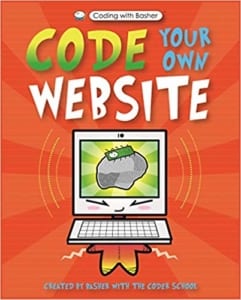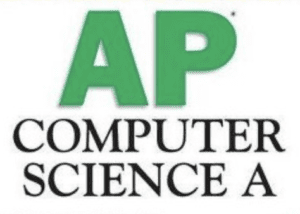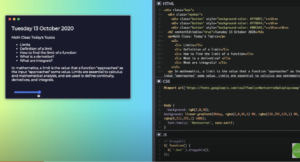Coding for 8 Year Olds: Programming Classes & Camps
For young kids interested in computer science, attending a coding camp or taking classes is a wonderful way to help them become tech savvy. While coding may sound like a complicated subject for younger kids, theCoderSchool takes a fun, hands-on approach to teaching programming.
We understand kids. Sitting in a classroom or reading a textbook can be hard for an eight-year-old, which is why we approach learning in a far more fun way. We make computer programming fun, showing kids how coding can create some of their favorite things such as video games or robots.
Can an 8 Year Old Learn to Code?
Learning to code can be a complex process, yet it is incredibly easy to break it down into small, bite-size pieces, which is exactly what we aim to do at theCoderSchool. We take big ideas and parse them out into concepts that are easily understood by most kids as young as eight.
Is 8 years old too young to learn coding?
We find eight years old is a common young age for students to successfully learn coding concepts. We work with many kids that start coding classes when they’re seven years old. There’s no right or wrong age—it depends on their interest level.
The key to helping kids learn to code is figuring out how to pique their interest. For example, your child is far more likely to grasp concepts and be excited about learning if they have the opportunity to peek behind the curtain of how their favorite video game is made. We use coding games to help capture students’ attention and keep them engaged and interested throughout our courses and camps.
If your child has an affinity for Minecraft, Roblox, or Among Us, that’s a great sign that coding will be a great fit. By learning video game development, for example, your child will be picking up coding skills and programming logic that will be useful and relevant for their future.
Best Coding Classes & Camps for 8 Year Olds
We know that every kid is different, which is why we offer a large range of topic areas under the coding umbrella. Some kids are highly motivated by robotics, while others just want to learn how to build video games.
Keep in mind that while some of our courses may be recommended for older kids, we don’t discriminate by age. If your kid has the background and interest for a class that’s recommended for kids older than age eight, we want them to try it out. Our philosophy is that learning should be customized to a child’s interests and skill-level, which is all part of theCoderTree learning philosophy.
Let’s take a look at a few options that we believe are great for kids age eight and up. Many of these courses are great for kids who are new to coding but are drawn to building games, logic, and problem-solving. All classes and courses are led by experienced programmers, allowing kids to explore many aspects of coding and computational thinking while planting the seed for a lifelong love of learning and STEM.
Both coding lessons and kids coding camps are taught on a low-ratio basis, with camps usually being six-to-one and classes typically two-to-one. However, we also teach programming lessons on a private basis. Camps happen during school breaks—summer camps, spring break camps, and winter break camps—while classes and tutorials are held after school typically once per week for one hour.
Scratch Classes
Scratch from MIT is perfect for the kid who just wants to understand what coding is all about. It’s a highly visual programming language, and is considered entry-level for beginning programmers. Built by programmers in the MIT Media Lab, Scratch classes make coding fun and interactive.
Instead of having to learn challenging syntax, students get to learn coding by playing games and using drag-and-drop coding blocks similar to Legos to understand fundamentals of programming. Learning Scratch is a great entrance point into picking up more advanced languages such as HTML, CSS, and Java.
Game Development Camp
Video games have an undeniable magnetic pull for most kids, and the Game Development Camp at theCoderSchool is the perfect way to turn their hobby into a new skill. Our Code Coaches will help your child build their very own games and create interactive stories from scratch using fundamental coding concepts. Our students use Scratch or Snap! when learning video game development.
The following camps and courses are generally recommended for kids aged nine and up, but some eight-year-olds have the interest and foundation to explore these concepts.
Mobile Madness Camp
Mobile Madness is for the coder who wants to learn the basics of how to create mobile apps. As with all of our courses, students get to learn by doing, which means each student will have the opportunity to code some of their own mobile apps. Students will get to experience using different platforms and coding apps in this camp, including Android, App Inventor, and JavaScript hybrid apps on repl.it or codepen.io.
Rise of the Machines Camp
Who doesn’t love a little sci-fi? Rise of the Machines is all about artificial intelligence (AI) and learning what it is, how it works, and how it’s used in the real world. While it’s a complex topic, we break it down into fun steps including guessing games and chatbots while teaching coding languages Scratch and Python. Your child will even get to create some basic AI apps to see how working with AI happens in everyday life, taking their AI knowledge to the next level.
Robocode Camp
Robotics camp is perfect for the kid who loves robots. Not only will your kid get a chance to program their own mBot robot, but they’ll also come away with a deeper knowledge of the coding that’s used to bring robots to life. It’s the perfect course for the kid who wants to see tangible results from their hard work in real time.
Minecraft Camp
This camp combines the fun of Minecraft with teaching kids to code at the same time. Playing Minecraft is fun, but building, creating, and modifying your Minecraft agents and worlds through coding is a skill that can help our younger generation in any field they choose to pursue.
Private Lessons
We know that camps aren’t always the perfect setting for kids, which is why we also offer private coaching lessons for kids who want to learn to code. Students can lead the way in private lessons, choosing the topic area and setting the pace for learning. Whether your child wants to dig into Scratch, learn how to build a video game, or understand how AI works, our private lessons are a great option for the one-on-one learner.
Find Coding Classes for 8 Year Olds Near You
TheCoderSchool has locations around the country, with both in-person and online learning opportunities for students. Whether your kid is passionate about video games or can’t wait to learn the inner workings of a robot, our professional Code Coaches can help them discover their interests and learn skills they’ll use for life. Be sure to visit our website to find a class near you.









